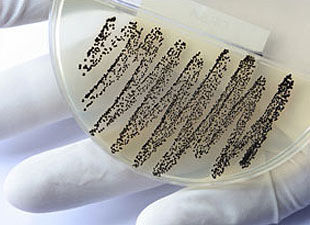
AsianScientist (Nov. 18, 2013) – Scientists in Australia have made a breakthrough in understanding the high-risk genes behind people’s development of rheumatoid arthritis (RA).
The findings, made by scientists at The University of Queensland’s Diamantina Institute (UQDI) and Monash University, have been published in the Journal of Experimental Medicine.
The autoimmune disease, characterized by chronic inflammation of the joints, affects one percent of the Western population and mostly people aged from 50 to 75 years. UQDI Professor Ranjeny Thomas said people with high-risk genes (HLA) were predisposed to rheumatoid arthritis.
“HLA genes influence the way a person’s immune cells respond to an individual’s own body or deal with infections,” Professor Thomas said. “Some people inherit HLA genes that put them at higher risk of the disease and smoking makes it even more likely for them to develop rheumatoid arthritis-specific antibodies called anti-CCP.”
Anti-CCP antibodies measure a response of the immune system towards a change in the body’s proteins (known as antigens). Smoking is known to make these rheumatoid-arthritis specific antibodies more likely.
Professor Jamie Rossjohn at Monash University and Professor Thomas set out to investigate how high-risk HLA molecules and antigens interact to cause RA. They found that antigens involved in the development of RA fitted into high-risk HLA molecules, like a hand in a glove, but normal self-antigens wouldn’t fit. This means the immune system of RA patients detects only changed proteins and not normal self-antigens.
The researchers found that immune cells in patients with RA lacked the usual control mechanisms to prevent runaway inflammation. The team solved the structure of the molecules and perfected a technique using patient samples to understand what goes wrong with the immune cells in RA.
For the first time, this study provides scientists with a tool to directly analyze immune cells responsible for the development of RA and how their behavior changes after treatment. These findings open up a prospect of novel immune therapy, which specifically targets these cells in RA patients with high-risk HLA genes.
The article can be found at: Scally S et al. (2013) A molecular basis for the association of the HLA-DRB1 locus, citrullination, and rheumatoid arthritis.
——
Source: The University of Queensland.
Disclaimer: This article does not necessarily reflect the views of AsianScientist or its staff.












